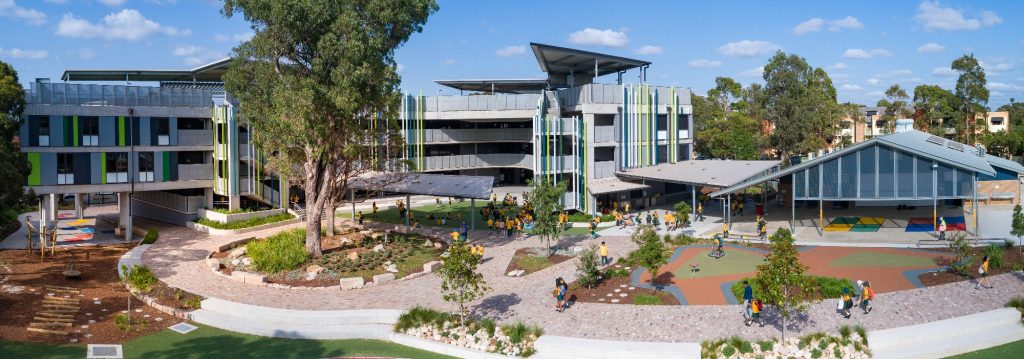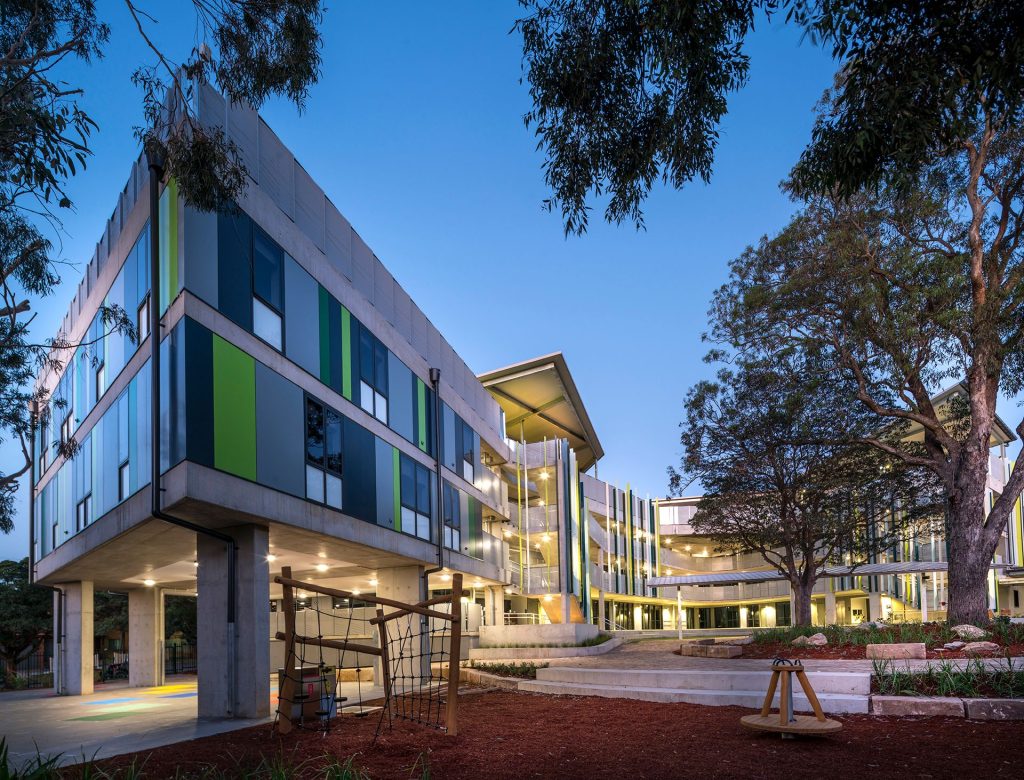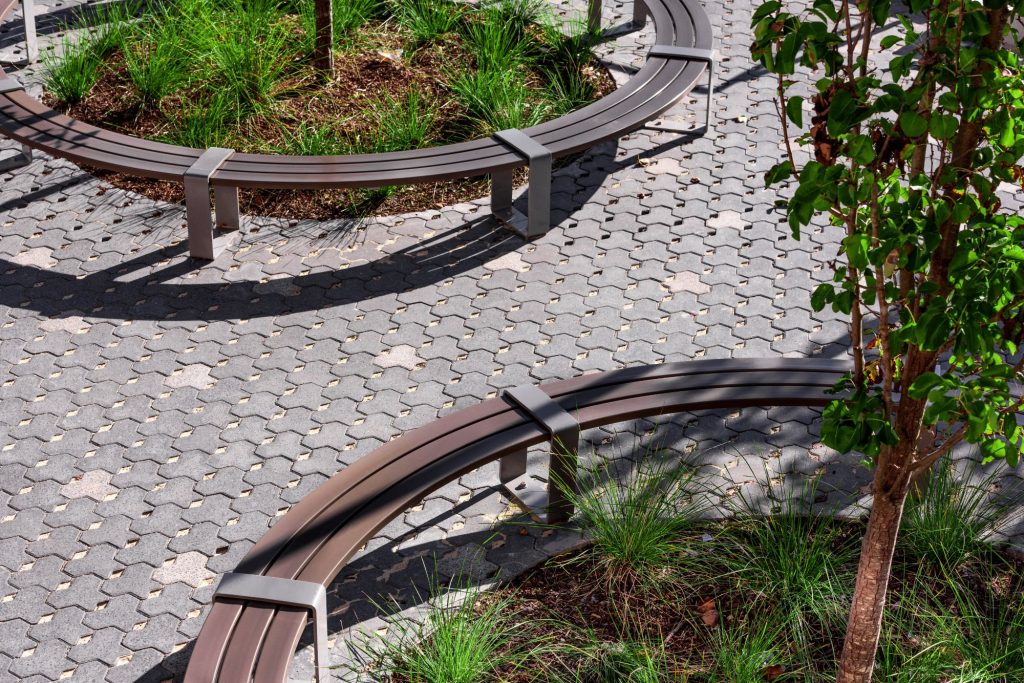
Landscapes as outdoor classrooms
Landscapes as outdoor classrooms
Share
In an age of urbanisation and technology, landscape architecture practice CONTEXT reveals how we can harness good design to encourage children to spend more time outdoors for free play and hands-on learning.
Landscape architect Hamish Dounan, director of Sydney-based studio CONTEXT, is dedicated to working with school communities to design outdoor landscapes with nature at their heart, to support learning and development.
“With studies citing that increased time in nature aids the growth, development and wellbeing of children, biophilic design in education settings is critical,” Dounan says.
“Outdoor environments at schools can, and must, go far beyond the formal ‘play’ provision.”
Drawing on his extensive experience working in the education sector, and specifically the studio’s work with TKD Architects to upgrade and extend Homebush West School in New South Wales, Dounan shares four key areas he and his team focus on when designing outdoor classrooms.

Inclusion
Designing outdoor spaces that can be enjoyed by everyone in the school is critical, says Dounan.
Landscape architects can ensure their design interventions are as inclusive and accessible as possible through extensive consultation with the school community and wider project team. This includes local government, teachers, parents and students and considers factors from gender to ability, neurodiversity and cultural background.
“A diverse range of outdoor spaces, from active sports to quiet play areas, outdoor classrooms, refuge areas and productive sensory gardens, ensures all students are able to reap the rewards of outdoor education,” he says.
Efforts to make all feel included at Homebush West School include sensory and productive gardens, signage and plant labels, and widened recycled brick pathways.
Adaptability
This diverse range of spaces need not be prescriptive in their uses either, adds Dounan.
“We design natural multi-functional spaces, which can be adapted over time to meet changing recreational and educational needs,” he says.
The rooftop garden at Homebush West School exemplifies this approach. Here, you’ll find a large open lawn area alongside several play structures, which sit between soft-fall mounds and a small amphitheatre and running track. Each area is designed to accommodate different sized groups and different student needs.
It’s also crucial that such spaces are comfortable – like the shaded tiered amphitheatre at Homebush West School, which can be used in all weather conditions. Canopy cover can create both shaded and entirely covered environments which, when integrated with moveable furnishings like outdoor rugs and beanbags, can be used as play and learning spaces throughout the year.

Materiality
The setting – whether that be urban or rural – is also critical to informing design decisions in education projects.
This is particularly applicable to the curation of a material palette, says Dounan, taking into consideration how colour, texture, composition and source will stimulate the students and respond to the climate in different ways.
Across all projects, he says CONTEXT prioritises using natural materials that, as far as possible, are locally manufactured.
At Homebush West School, providing seating throughout the site was a key part of the brief. In response, the studio designed a combination of curved and straight benches comprising a combination of both pre-cast concrete and natural materials such as sandstone logs.
Encircling planting beds and looking out to the playground, the seating design promotes informal social gatherings and provides opportunities for group learning in an outdoor setting.

Sustainability
Sustainable landscape design has two-pronged benefits in schools. One, they are resilient and more likely to stand the test of time. Two, creating active and imaginative play spaces – like the mulch trails and stepping stone logs at Homebush West School – encourages students to appreciate Australian ecology and supports their development as future stewards of the environment.
“At CONTEXT we work to incorporate nature into our designs in ways that are both sustainable and educational,” Dounan says.
The bush play garden at Homebush West, for example, has created a habitat that supports local wildlife such as warbling magpies, lizards and dragonflies.
“Our team of expert horticulturalists design ecological strategies that focus on planting native species. Adapted to local conditions, they require minimal maintenance, and create habitats that support local wildlife,” Dounan says.
He also notes the importance of working closely with the architects to visibly embed water conservation and renewable energy systems throughout the designs.
“Through including rainwater collection measures such as swales and rain chains, which are then used in the productive gardens, alongside including solar panels and wind turbines, the students are encouraged to learn about ecological cycles and responsible resource use.”
Mutually beneficial outdoor classrooms
Well-designed landscapes, like CONTEXT’s work at Homebush West School, can promote sustainability and inclusion while creating spaces that stimulate a child’s curiosity and enjoyment. Thoughtfully incorporating native species, sensory elements, dynamic play opportunities and an atmosphere of imagination, landscape architects are able to craft outdoor classrooms that benefit the future in myriad ways.
Photography by Mike Chorley.
You Might also Like


















